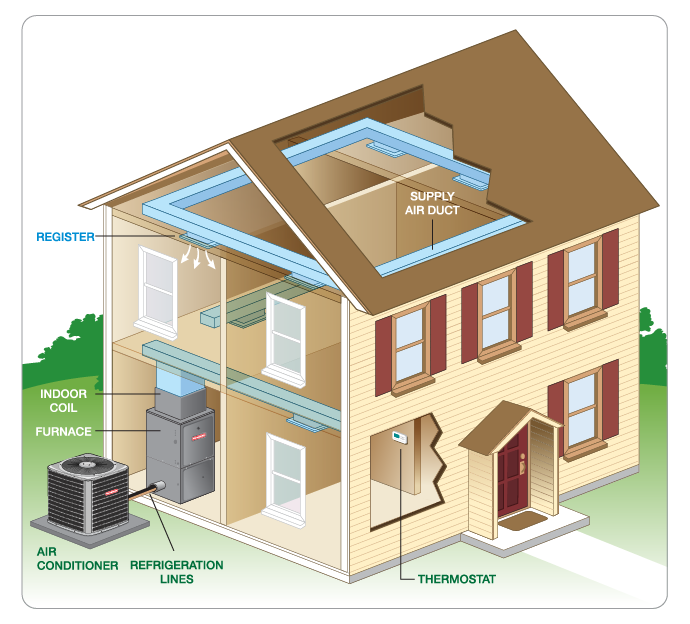How Does a Central Air Conditioner Work?

The best air conditioner is the one you don’t have to think about. It comes on the moment the indoor temperature set on the thermostat requires cooling performance, and then runs quietly and efficiently when needed. But when it’s time to perform routine maintenance, make repairs or replace your system, it’s helpful to understand how an air conditioning system works.
Parts of a Central AC System
To get a better sense of how your air is cooled, it helps to know a little bit about the parts that make up the air conditioning system. A typical central air conditioning system is a two-part or split system that includes:
- The outdoor unit contains the condenser coil, compressor, electrical components and a fan.
- The evaporator coil, which is usually installed on top of the gas furnace inside the home.
- A series of pipes, or refrigeration lines, connecting the inside and outside equipment.
- Refrigerant, the substance in the refrigeration lines that circulates through the indoor and outdoor unit.
- Ducts that serve as air tunnels to the various spaces inside your home.
- A thermostat or control system to set your desired temperature.
The Refrigeration Cycle
- Using electricity as its power source, the refrigerant flows through a closed system of refrigeration lines between the indoor unit and the outside unit.
- Warm air from the inside of your house is pulled into duct work by a motorized fan.
- The refrigerant is pumped from the exterior compressor coil to the interior evaporator coil, where it absorbs the heat from the air.
- This cooled air is then pushed through connecting ducts to vents throughout the home, lowering the interior temperature.
- The refrigeration cycle continues again, providing a consistent method to keep you cool.
Keeping Air Clean
It is estimated that the air you breathe inside your home is more polluted than the air outside your home.1 A cooling system offers just the basics with regard to enhanced indoor air quality for you and your family. Indoor air filtration can help maintain the efficient operation of your cooling system by removing a wide range of airborne dust and reducing airborne particulates that can build up on the surface of the cooling coil.
It is important to change your filters regularly. As filters become loaded with particulates, your system has to work harder, increasing your cooling bills.

1 Guide to Indoor Air Cleaners in the Home. (2014, July). Retrieved from EPA: https://www.epa.gov/sites/production/files/2014-07/documents/aircleaners.pdf